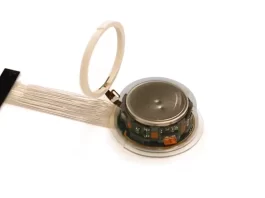Following the successful completion of three hundred trials with lambs, the use of an artificial womb for prematurely born babies might begin as early as this year.
A human trial of the artificial womb is something that the people who developed it are hoping to get approved for. The babies that were born before the 28th week could benefit from it.
A group of researchers from the Children’s Hospital in Philadelphia successfully tested the artificial womb using preterm lambs. The researchers discovered that the animals “open their eyes, become more active, and demonstrate normal breathing and swallowing movements” while operating inside the artificial womb.
Since their lungs are not fully grown as a result of preterm birth, the primary reason that fifty per cent of premature newborns do not survive is that they have a difficult time transitioning from breathing in the amniotic fluid to breathing regular air.
After carrying out three hundred successful tests, the scientists discovered that the animals had normal brain development and stable nutrition as if they were being nourished by their mother rather than by themselves.
The United States Food and Drug Administration (FDA) has convened a meeting with specialists to discuss the subsequent steps that will be taken to begin human trials of the artificial womb known as EXTEND. In this year, it is anticipated that a decision will be made public.
The artificial womb functions by attaching the umbilical cord of the foetus to a device that oxygenates the blood and directs it to a bag filled with fluid. This technology simulates the womb and enables the baby to breathe and swallow amniotic fluid analogous to how it would develop in the womb.
Lambs are used by Emily Partridge and her team at the hospital since the majority of the information regarding the development of human embryos has been gathered from these animals. This includes information regarding the circulation of the foetus and the phases of development.
This is the biological equivalent of a human embryo that is 23 to 24 weeks old. The lambs that were used were born between the 106th and 113th day. One hundred fifty-two days is the amount of time sheep spend in gestation.
The results of studies conducted on the growth of the liver and brain of lambs in artificial wombs have been positive.
According to the scientists, the animals displayed normal or enhanced movement, sleep and waking cycles, breathing and swallowing, and appeared comfortable and unaffected by stress.
A clarification was provided by Alan Flake, one of the individuals responsible for the development of the artificial womb, that it is not intended to replace pregnancy.






